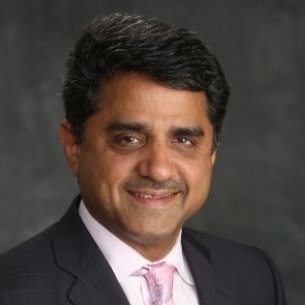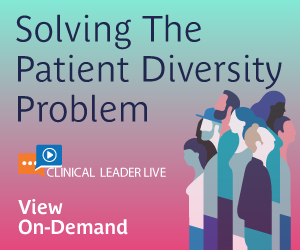AI Helps BioXcel Meet Unmet Medical Needs

By Ed Miseta, Chief Editor, Clinical Leader

With all of the talk about artificial intelligence (AI) and the impact it will have on clinical trials, I often find myself wondering how many companies are actually using the technology and finding novel ways for it to improve their studies. Vimal Mehta, CEO for BioXcel Therapeutics, seems to have the same concerns.
“I think your comment is right on the mark,” he says. “I hear a lot of companies talking about AI but very few using it or producing positive results. I believe BioXcel is the first company to use machine learning and AI to identify novel drugs that can have a beneficial impact on patients. That's the founding principle we had in place when the company went public in March of 2018.”
BioXcel Therapeutics was spun out from its parent company, BioXcel Corporation, which is a firm focused on big data, AI, and machine learning. Mehta notes his company is focused on neuroscience and immunoncology and has taken one drug candidate all the way to clinical trials. The company currently has two drugs in its pipeline, BXCL501 and BXCL701.
The first product, BXCL501, is for the treatment of acute agitation in patients with neuropsychiatric conditions such as schizophrenia, bipolar disorder, or dementia. That product is focused on five different indications. The other product, BXCL701, is an immuno-oncology product. That molecule is being combined with other checkpoint inhibitors for the treatment of certain cancer tumors, including pancreatic and prostate. AI was used to identify both treatments.
Reduce The Development Timeline
Many companies are currently looking for pipeline or commercialized drugs that could be effective at treating the symptoms of COVID-19. BioXcel uses a similar approach but is focused on other therapeutic areas. By targeting drugs that have already reached clinical testing, the company’s approach is expected to lead to a faster development cycle for unmet medical needs.

BioXcel’s goal is to identify treatments, perform clinical testing, and make the treatments available to patients within a period of four to five years.
“We want to identify compounds that have already gone to the clinic,” says Mehta. “The safety of those compounds will have already been established. Some of them may not have been successful in their original efficacy phase or were dropped when a company changed their focus. We hope to breathe new life into these compounds by evaluating their effectiveness in a different therapeutic area, and we believe there are potentially 3,000 such drugs we can evaluate. We also believe there are drugs on the market whose full potential has not yet been exploited.”
More Data Means More Research And Publications
Identifying drugs that might be a good treatment for a given disease is, of course, the most difficult aspect of the process. It requires a lot of data, and fortunately the industry is seeing an evolution and explosion in data. That means the industry is also seeing an explosion in the volume of literature being published.
“In past years, companies could keep up with all of the literature being produced if they devoted enough people to performing that review,” says Mehta. “Those reviews would help you to make sense of where to focus your efforts. Today, nearly 5,000 medical and scientific articles are being published in peer-reviewed journals every day. It is almost impossible for any company to keep up with that. Knowledge is coming at us at a faster rate than we are able to absorb it.”
According to Mehta, all that information and knowledge must be stitched together in a seamless manner to be able to identify treatments that may be beneficial to patients.
The Role Of AI
BioXcel will use AI to examine drugs that are on the market, in a company’s pipeline, or sitting on a shelf. The goal is to locate potential treatments for a given therapeutic area.
“Once we decided that we wanted to focus on agitation, our scientists designed keyword queries which could be 100 to 5,000 words long. Machine learning technology was then used to scan millions of publications to gather information on those queries and turn it into metadata. Metadata was produced on different diseases, drugs, and mechanisms of action. The AI then searched the data for connections.”
A scientist might be able to read one article per day and detect first degree connections. Machines can scan hundreds of publications and make first, second, and even third-degree connections. That helped BioXcel determine which drugs might be a suitable treatment for a defined medical need. Using AI, it was able to identify a sedative treatment that was on the market from Pfizer.
Although the AI identified other drugs with a similar mechanism of action, the Pfizer treatment contained all the properties BioXcel was searching for. That treatment went off patent in 2017, so BioXcel was able to purchase the API and develop its own drug.
“AI played a crucial role in helping our development team connect the agitation symptoms to this drug,” adds Mehta.
A New Treatment For Patients
Thus far Mehta is proud of the effort. The agitation symptoms the company is targeting carries a healthcare burden that costs millions of dollars. Current treatments are not optimal for patients with bipolar disorder or schizophrenia. Those patients tend to end up in emergency room psych units where they are treated with psychiatric drugs or benzodiazepine. Mehta believes those patients need a noninvasive treatment that features a rapid onset of action and can calm patients without extensive sedation.
Mehta believes BXCL501 will be that treatment. In July 2020, the company announced positive results from two pivotal Phase 3 trials (SERENTIY I & II) of BXCL501 for the treatment of acute agitation for Schizophrenia and bipolar patients. The company expects to submit an NDA in Q1 2021.

